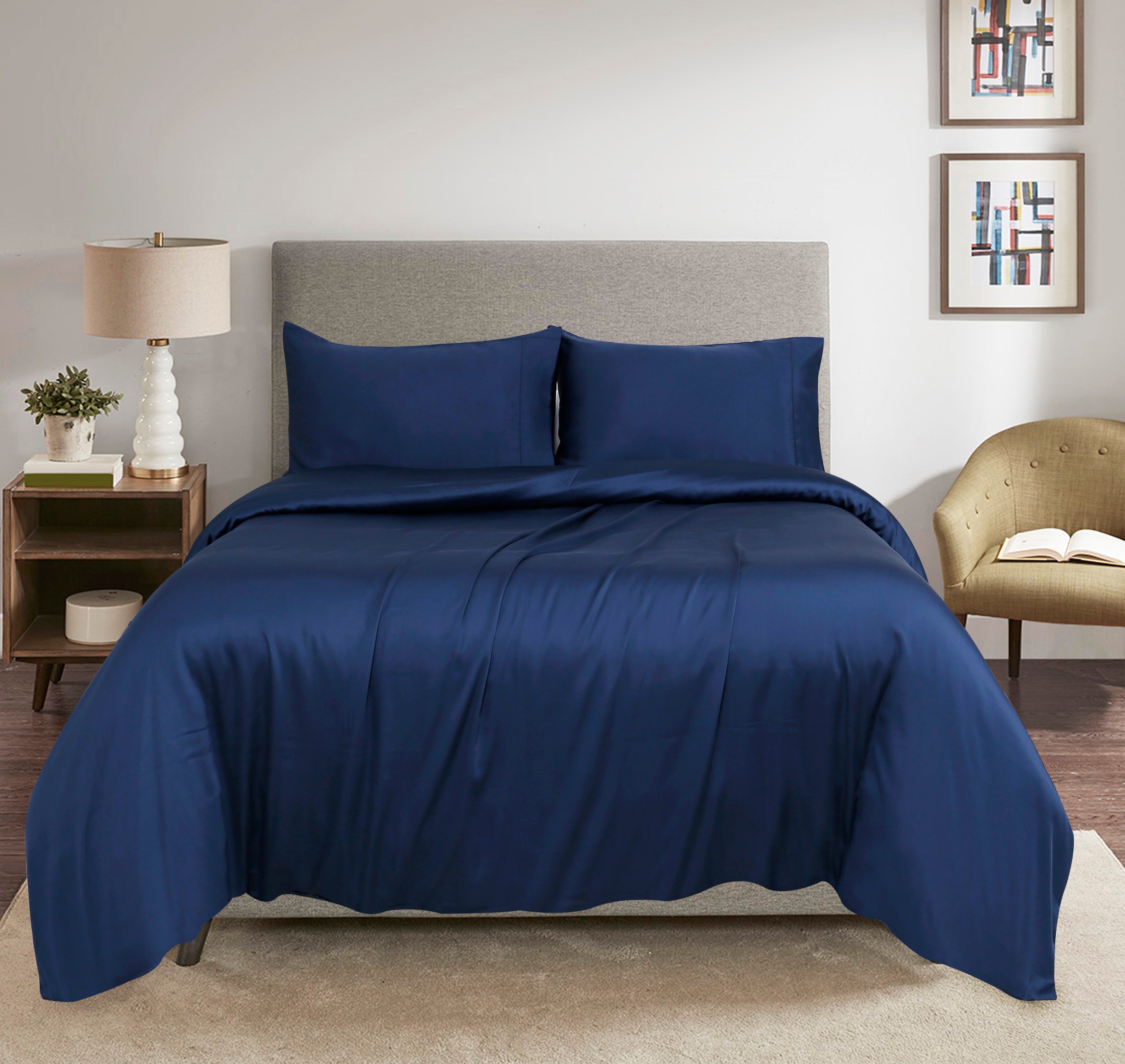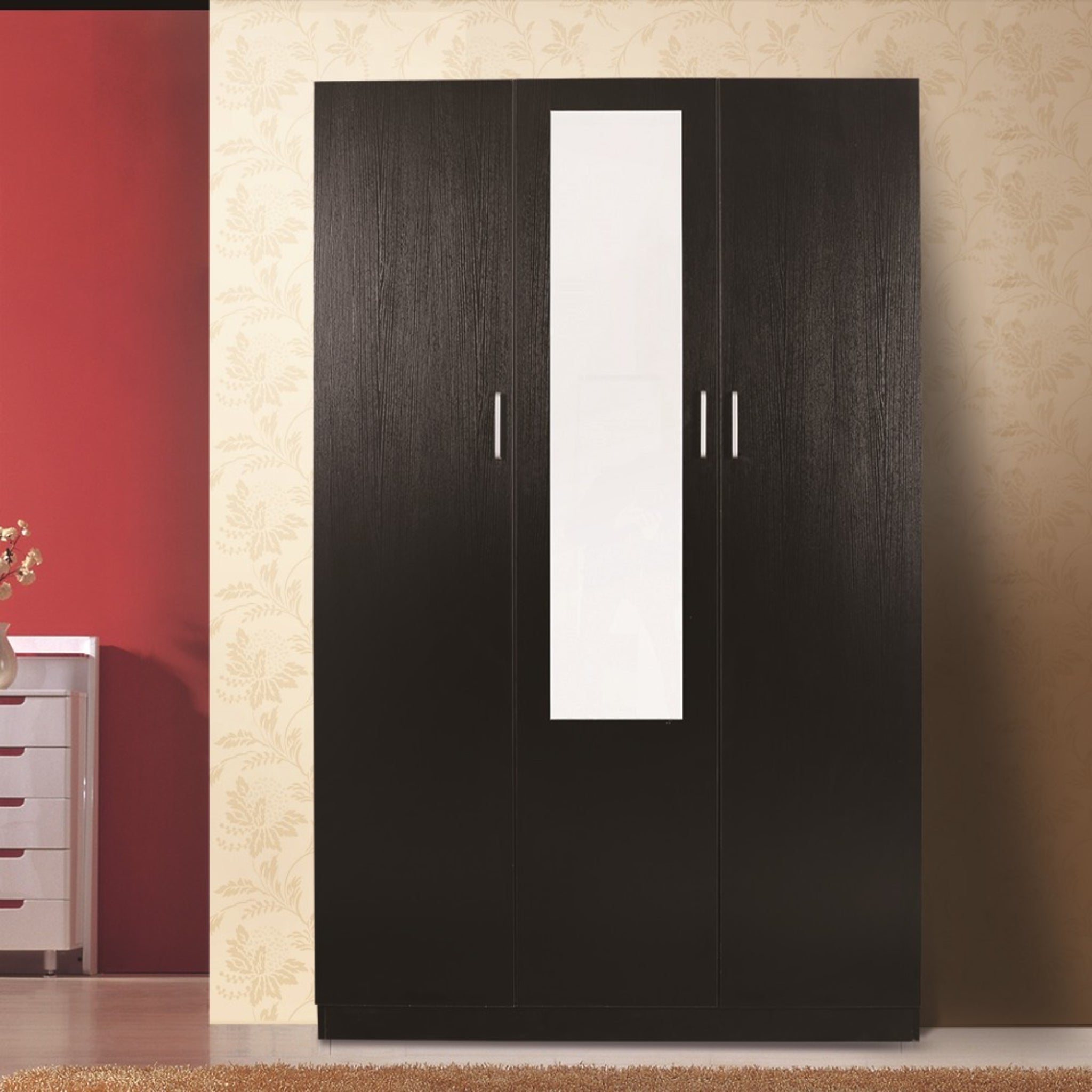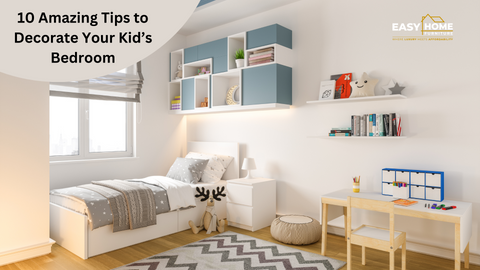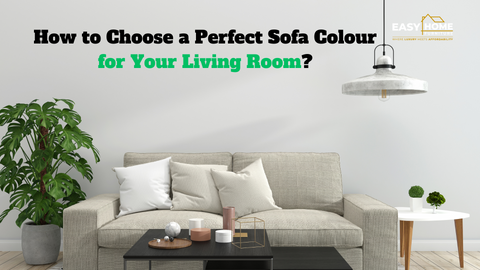When you're trying to choose between a fabric and a leather sofa, it really boils down to your lifestyle, your home's aesthetic, and what you're willing to spend. It’s a classic head-to-head. If you’re after something that will last for decades and is a breeze to keep clean, leather is a strong contender. On the other hand, if you want that instant sink-in comfort and a world of design options without the hefty price tag, fabric is your go-to.
Let's unpack those initial trade-offs to help you find your starting point.
Your Quick Guide to Fabric vs Leather Sofas
Picking the right material for your sofa is a big deal. It’s a decision that shapes not just the look of your living room but how you actually live in it every day. You're essentially choosing between the soft, warm hug of a fabric couch and the cool, sophisticated presence of a leather one. To get it right, you need to think about how each material will hold up to the demands of your household.
A family with kids and pets, for instance, might lean towards leather for its wipe-clean convenience. It's no surprise that in Australia, leather sofas already command 34.7% of the market—a testament to their reputation for durability and classic style.
This handy visual lays out the key differences in lifespan, cost, and upkeep at a glance.

As you can see, while leather might cost more initially, that investment often pays off over time with its impressive lifespan and relatively simple care routine. For a deeper dive into how different materials compare, check out our complete guide to the best material for sofas.
To give you a clearer picture, here's a quick summary of what to expect from each.
Fabric vs Leather At a Glance
| Feature | Fabric Sofa | Leather Sofa |
|---|---|---|
| Comfort | Instantly soft, warm, and inviting. No "breaking in" period. | Firmer at first, but softens beautifully over time. |
| Variety | Almost limitless options in colour, texture, and pattern. | More restricted to natural tones and finishes. |
| Maintenance | Needs regular vacuuming and can be prone to stains. | Just needs a simple wipe-down and periodic conditioning. |
| Allergies | Tends to trap dust, pollen, and pet dander. | A great hypoallergenic choice as it repels allergens. |
This table shows the fundamental give-and-take. Fabric offers immediate comfort and endless customisation, while leather provides practical, long-term benefits, especially for allergy sufferers.
Comparing Durability for Real Life
When you bring a sofa into your home, you're not just buying a piece of furniture. You're setting the stage for movie nights, family get-togethers, and those rare quiet moments. Its durability isn't just a selling point—it’s the difference between a fleeting purchase and a faithful companion for years to come. The real test isn’t in the showroom, but in the beautiful chaos of everyday life.
So, how do fabric and leather really hold up in a busy household? Let's get past the sales pitch and look at what durability means in the real world.

Leather's Resilience and Patina
Good quality leather, especially top-grain leather, is famous for its toughness. It has a natural resistance to spills, as liquids often bead up on the surface instead of soaking straight in. That little window of time is a lifesaver when you’ve got kids, giving you a chance to wipe away messes before they become permanent stains.
But the story of leather's durability is really about how it ages. Over the years, it develops a unique patina—a soft lustre that comes from everyday use, natural oils, and light. This isn't damage; it's a sign of character that makes the sofa truly your own.
Key Insight: A leather sofa doesn't just wear out; it wears in. Minor scratches can often be buffed out, and the material only gets softer and more inviting with age, making it an investment that can genuinely last decades.
Fabric's Performance and Vulnerabilities
Fabric sofas bring a different kind of durability to the table, and it all comes down to the specific material. Today's performance fabrics—think tightly woven microfibres or tough synthetic blends—are engineered to fight off stains, fading, and wear. These aren't your grandmother's couch fabrics; they're designed for the realities of a high-traffic home.
Even with these innovations, most fabrics are naturally more absorbent than leather. Spills need immediate attention to prevent staining, and gritty dirt can slowly wear down the fibres, creating that "well-loved" look on armrests and cushions a bit faster than you might like.
It's no surprise that leather sofas are so popular across Australia, a preference largely driven by their reputation for durability and easy care. For many families with kids or pets, leather’s ability to handle wear better than most fabrics, its timeless style, and its simple wipe-clean nature make it a practical choice over fabric options that might stain easily and need replacing sooner. You can dig deeper into these consumer trends for Australian leather goods on renub.com.
The Pet and Sunlight Test
If you're weighing up a fabric vs leather sofa, two big players in your home will influence the decision: pets and sunlight.
-
Pets: Leather is fantastic for wiping away pet hair and dander, making it a solid hypoallergenic option. The catch? Claws. While small scratches can blend into the patina, deep gouges are there to stay. On the other hand, a tightly woven performance fabric might resist snagging, but it will attract pet fur like a magnet.
-
Sunlight: Direct sunlight is harsh on both materials, but they suffer in different ways. Leather can fade, dry out, and eventually crack if it isn't conditioned. Fabric, particularly deeply coloured or patterned ones, can also fade dramatically, losing its vibrancy over time.
Decoding the Comfort and Feel Factor
Beyond how long it will last, the day-to-day experience with your sofa really boils down to one simple question: how does it feel? This is a purely sensory thing, deeply personal, and it plays a massive part in whether you’ll truly love your new centrepiece. Fabric and leather offer two completely different paths to comfort.

A fabric sofa usually feels welcoming and soft right from the get-go. Think of plush chenille or luxurious velvet – they give you an instant sense of warmth and cosiness, perfect for sinking into after a long day. There’s rarely a "breaking in" period; they’re ready for relaxation straight away.
A new leather sofa, on the other hand, often starts out with a firmer, more supportive feel. This initial stiffness isn't forever, though. Over time, the leather softens and moulds to your body, creating a comfort that’s uniquely yours. It’s an evolving kind of comfort, one that rewards you with a personalised fit.
Temperature and Breathability
A big point of difference in how to choose a sofa is how each material reacts to temperature, which is a massive deal in the ever-changing Australian climate.
-
Fabric Sofas: These materials tend to stay at a pretty neutral temperature all year round. They won’t give you a shock on a cold winter morning or get sticky on a humid summer arvo. You get consistent comfort, whatever the season.
-
Leather Sofas: Leather has a more dynamic relationship with temperature. It can feel cool and refreshing to the touch, but that can translate to chilly in the dead of winter. And in the peak of summer, it can get warm and a bit sticky against bare skin, something to think about, especially in warmer parts of the country.
Key Insight: Your local climate should be a major factor in your decision. Fabric offers stable, all-season comfort, whereas a leather sofa’s feel can change quite noticeably with the temperature inside your home.
The Hypoallergenic Advantage
If allergies are a worry in your household, your choice of sofa material becomes a health consideration. The woven texture of a fabric sofa can easily trap dust, pet dander, and other allergens, meaning you’ll need to be on top of your vacuuming game to keep things fresh.
This is where leather really comes into its own. Its smooth, non-porous surface just doesn't hold onto allergens. Dust mites and pet hair can be wiped away in seconds, making it a brilliant hypoallergenic option for a healthier home. For families with sensitive individuals, this practical benefit is often the deciding factor.
A Realistic Look at Maintenance and Cleaning
A sofa is a long-term investment, and how it looks years down the track really comes down to the maintenance you’re prepared to put in. Often, the whole fabric vs. leather debate boils down to this single, practical point: what level of upkeep genuinely fits your life? Be honest with yourself about how much time you’re willing to spend cleaning.
Generally speaking, a leather sofa is the more straightforward option for day-to-day messes. Spills are where it really shines; most liquids simply bead on the surface, letting you wipe them away with a damp cloth without any fuss. For a busy home with kids or pets, that immediate resistance can be a lifesaver, turning what could be a disaster into a minor clean-up.
But don’t mistake low-effort cleaning for no-effort care.
Caring for Leather Sofas
While wiping up spills is easy, leather needs a bit of proactive attention to stop it from drying out and cracking, especially in our harsh Australian climate. This means using a specialised leather conditioner every 6-12 months to put moisture back in and keep it feeling soft and supple. It’s a small ritual, but it’s absolutely crucial for preserving that classic look and helping it develop a beautiful patina over time, rather than just damage.
Key Insight: The real commitment with leather isn't about daily cleaning; it's about preventative care. Forgetting to condition a leather sofa is the quickest way to ruin its famous durability, turning a long-lasting investment into a prematurely aged piece of furniture.
For a more detailed walkthrough, you can find some great expert tips on how to care for leather furniture that cover everything from conditioning to fixing minor scratches.
Maintaining Fabric Sofas
Fabric sofas, on the other hand, demand a more consistent cleaning routine. Because they’re absorbent, spills need to be dealt with straight away to stop them from becoming permanent stains. You'll also need to get the vacuum out regularly with an upholstery attachment to get rid of the dust, crumbs, and allergens that inevitably get trapped in the fibres.
Here’s a realistic breakdown of what fabric sofa upkeep looks like:
- Weekly Vacuuming: This isn’t optional. It’s essential for getting rid of surface dirt and allergens like pet dander and pollen.
- Immediate Spill Response: Always have a good upholstery cleaner handy. When a spill happens, blot it immediately—never rub—to prevent it from setting deep into the fabric.
- Professional Cleaning: Depending on how much use it gets, a professional deep clean every 1-2 years is often what it takes to really refresh the fabric and bring its colour back to life.
Of course, the type of fabric makes a huge difference. Modern performance fabrics are treated to repel stains, making them far easier to look after than natural fibres like cotton or linen. For tackling everyday spills and general upkeep, a practical DIY upholstery cleaning guide offers some valuable tips for different materials.
Ultimately, the choice comes down to your personal preference: do you favour a little bit of proactive conditioning every now and then, or are you happier with more frequent, routine cleaning?
Finding the Right Style for Your Home
Your sofa isn't just a place to sit; it's the visual anchor of your living room, the piece that sets the tone for the entire space. When you're figuring out how to choose a sofa, the material is one of the biggest style decisions you'll make. The choice between fabric and leather fundamentally shapes the room's character.
Fabric opens up a world of creative freedom. With a nearly endless variety of colours, patterns, and textures, it can adapt to just about any interior design you can dream up. If you're chasing a relaxed coastal vibe with a light linen blend or a vibrant bohemian look with bold patterns, fabric gives you the versatility to bring that vision to life.
A leather sofa, on the other hand, makes a powerful and definitive statement. It brings a sense of timeless sophistication and weight to a space.
Leather's Classic Appeal
A leather sofa commands attention. Its natural texture and rich, deep tones create an anchor that pairs beautifully with other raw materials like wood, metal, and stone. Just picture a classic chesterfield in a traditional study, or a sleek, minimalist leather sofa in a modern industrial loft.
The aesthetic of leather is one of enduring elegance. It doesn’t just fit into a room; it elevates it.
Key Insight: Leather offers a more formal, structured look that acts as a sophisticated centrepiece. It’s less about blending in and more about creating a focal point that exudes quality and permanence, making it a strong choice for modern or classic interiors.
Fabric's Versatile Charm
If leather is the classic statement piece, fabric is the ultimate chameleon. It invites a softer, more casual atmosphere, perfect for creating a cosy, lived-in feel. Better yet, if your style evolves, a fabric sofa can often evolve right along with you through new cushions or throws.
- For a Hamptons look: You can't go past a light-coloured linen or cotton slipcover sofa.
- For a mid-century modern space: A tweed or felted wool in a muted, earthy tone beautifully enhances those clean lines.
- For a maximalist interior: Imagine a plush velvet in a stunning jewel tone—it becomes a true showpiece.
Of course, the colour of your sofa is a huge part of its style. For more guidance on this, our article on how to choose a perfect sofa colour can help you harmonise your new piece with your existing decor. Ultimately, fabric lets you express your personality with more nuance and flexibility than leather ever could.
Analysing Cost and Long-Term Value
When you're trying to choose a sofa, it's easy to get fixated on the initial price tag. But that number only tells a fraction of the story. The real financial picture comes into focus when you look at the long-term value—a blend of the upfront cost, durability, maintenance, and even sustainability. A sofa isn't just another purchase; it's a long-term investment in your home’s comfort.

As a general rule, a high-quality leather sofa will have a higher sticker price than a comparable fabric one. This difference comes down to the complex tanning process and the premium nature of the raw material itself. But don't let that initial outlay put you off. With the right care, a good leather sofa can last for 15-20 years or more, meaning it could easily outlive several fabric sofas.
Understanding the Lifetime Cost
A fabric sofa often looks like the more budget-friendly choice at first glance, but its lifetime cost can slowly add up. Depending on the fabric quality and how much use it gets in a busy household, you could be looking at reupholstering or replacing it completely within 5-8 years. Once you factor in a few professional cleans to tackle stubborn stains, that financial gap between leather and fabric starts to shrink considerably.
A quality sofa is also a cornerstone of a restful home environment. For those looking to create a sanctuary for relaxation, learning about the top 10 ways to improve your sleep in 2024 can complement your furniture choices.
The Value Proposition: Think of a leather sofa as a long-term asset. Its ability to withstand decades of use means you avoid the recurring cost and hassle of sofa shopping every few years, ultimately delivering superior value.
Sustainability and Ethical Considerations
These days, the conversation around value goes far beyond dollars and cents. For many Australian homeowners, sustainability is a major part of the decision. In fact, within the luxury furniture market, a significant 46% of consumers now prioritise sustainability, weighing up the ecological footprint of their choices.
Ethically sourced, vegetable-tanned leathers are seen as a durable, long-lasting option that reduces landfill waste by simply lasting longer. On the other hand, fabric isn't out of the running. Eco-conscious buyers can find fantastic options made from recycled materials, organic cotton, or sustainable fibres like hemp. The trick is to dig a little deeper into the origins of the material—whether you lean towards the natural resilience of leather or the innovative spirit of modern fabrics. Your choice reflects not just your budget, but your values, too.
Answering Your Sofa Questions
Even after weighing up all the pros and cons, a few practical questions always pop up when it comes to choosing between fabric and leather. Let's clear up these final details so you can feel completely confident in your decision.
Which Is Better With Pets?
This is the big one for most animal lovers. Leather has a clear advantage when it comes to cleaning – pet hair and dander wipe right off, which is a huge plus for allergy sufferers. The trade-off, of course, is that it's more susceptible to scratches from claws.
On the flip side, a really tight, durable performance fabric can stand up better to snagging. The catch is that it acts like a magnet for fur, meaning you'll be reaching for the vacuum a lot more often. It really comes down to what you can live with: a few character marks or constant de-furring.
Do Leather Sofas Last Longer Than Fabric?
In almost every case, yes. A high-quality leather sofa that's looked after properly can last for decades, often seeing two or three fabric sofas come and go in the same period. Leather is just inherently tougher and gets better with age, developing that beautiful, unique patina.
Key Insight: While the upfront cost of leather is higher, its sheer longevity often makes it the better long-term investment. A fabric sofa in a busy family home might start looking tired much sooner, leading to replacement costs down the track.
Is Reupholstering a Good Option?
Reupholstering can be a brilliant way to breathe new life into a sofa you love, but it's not always the most practical choice financially. The cost of labour and new material can quickly add up, sometimes getting close to the price of a brand-new sofa, particularly for more complex designs.
It really only makes sense if the sofa has a rock-solid, high-quality frame that you know is worth saving. If the bones of the sofa aren't great, you're usually better off putting that money towards a new purchase.
Ready to find the perfect centrepiece for your living room? Explore the stunning collection of customisable fabric and leather sofas at DLB Furniture and find a style that's built to last. https://dlbfurniture.com.au










